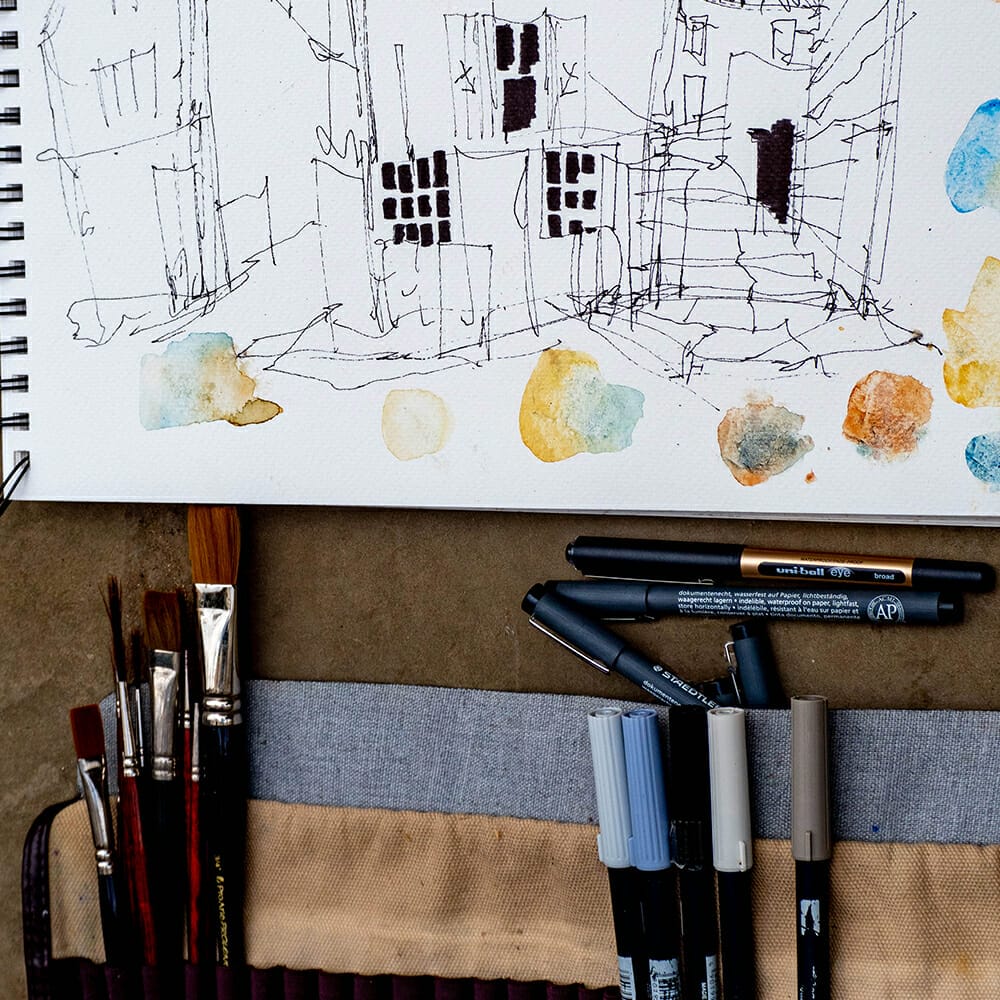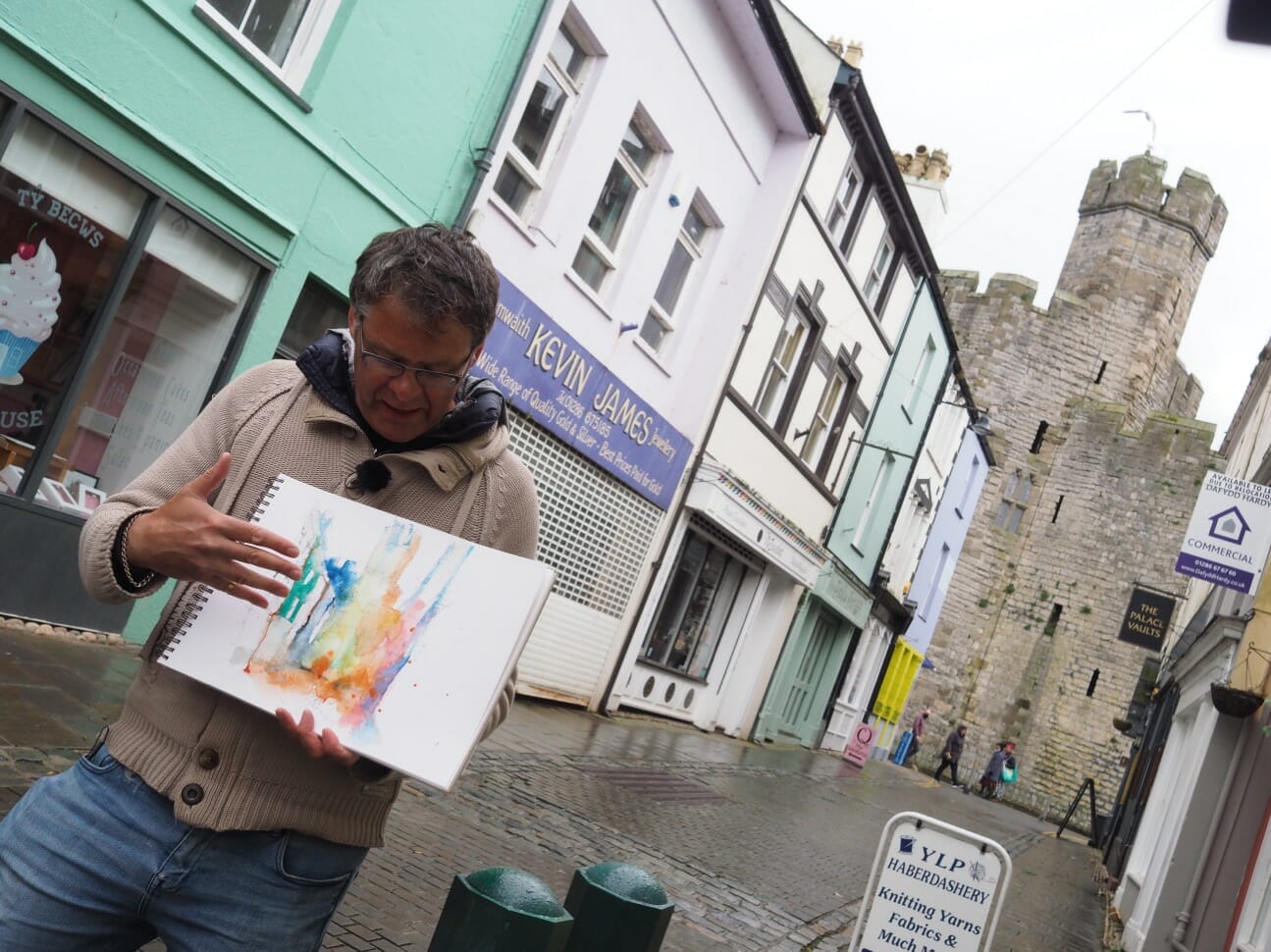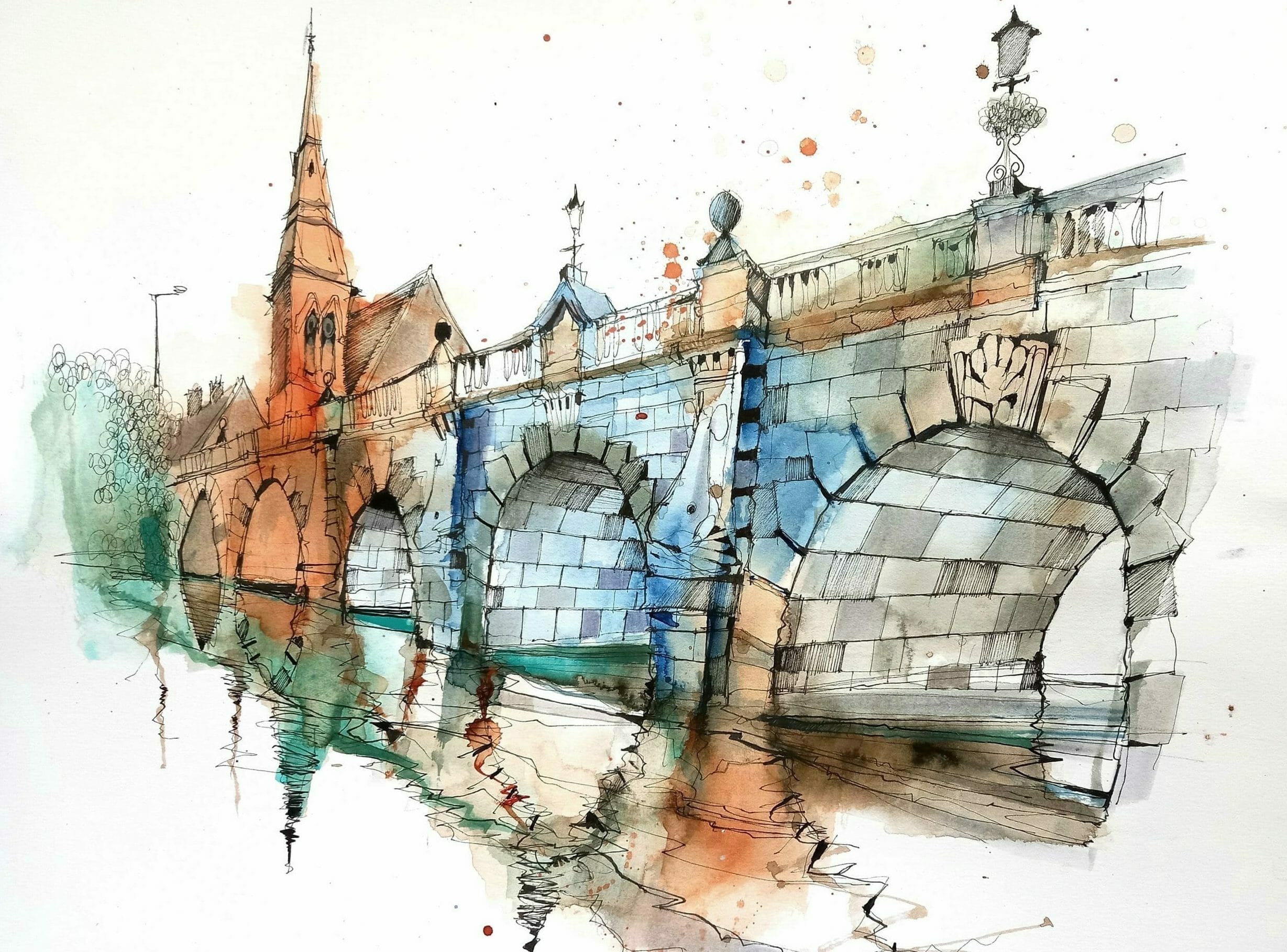How to choose the right watercolor paper
If you’re wondering what the best type of watercolor paper is, then you’re not alone!
With so many options available, it’s important to find one that brings out your paints full potential, absorbs water and pigments well, whilst also providing the right texture and surface.
Several types of watercolor paper are available in the market, each with unique features and characteristics.
In this blog post, we will help you to navigate the world of watercolor paper by looking at what expert urban sketcher Ian Fennelly uses, and by considering some important factors and exploring some of the most common types of watercolor paper and their qualities so that you can make sure that you’re choosing one that’s right for you.
Factors to consider
The choice of watercolor paper largely depends on your personal preference, painting style, and the intended use of your artwork. Here are just a few factors to consider when choosing the right watercolor paper:
- Surface Texture
Do you prefer a smooth or rough texture on your paper? If you like to work with fine details and precise lines, a smooth surface like hot-pressed paper may be the best choice. On the other hand, if you enjoy creating expressive and textural paintings, rough watercolor paper may be more suitable.
- Weight and Thickness
Watercolor paper is available in different weights and thicknesses, ranging from light to heavy. A heavier paper is more durable, less likely to warp or buckle, and can handle multiple washes and layers. However, a lighter weight paper may be more affordable and easier to work with. Ian normally uses 300g weight paper because he uses lots of water but used a heavier weight paper before going into urban sketching. If you’re outside with a sketchbook, it can be great to use something that is lighter and more portable.
- Format & Size
Watercolor papers are available to buy in multiple formats ranging from larger formats to smaller and more portable options. You can also use rectangular or square format; some sketchers even use round!
Ian uses an A3 rectangular size format in a spiral bound sketchbook which lends itself well to large landscapes, but many artists use A4 and A5 when sketching outside.
Paper pads and sketchbooks are great options and are ideal for painting on the go. You can then separate the individual sheets either from gummed or spiral-bound pads.
You can also buy paper as single sheets; this can be a fun way to try out different textures without the commitment of buying a whole pad and works better for some artists. If you are using these, it’s a good idea to tape down your paper so that it doesn’t warp.
Watercolour blocks are a good choice for people who don’t want to tape down their paper and you can also buy paper by the roll and cut it to size to save money.
Check our supply list here to see Ian’s chosen paper.
- Quality and Archival Properties
The quality of the paper can affect the longevity and appearance of your artwork. Higher quality watercolor paper is made from 50% – 100% cotton fibers, is acid-free, and has archival properties that can ensure your artwork lasts for decades.
- Budget
Watercolor paper can vary in price depending on the quality, brand, and type of paper. Consider your budget and how much you are willing to invest in your art supplies.
Types of watercolor paper

Hot-Pressed Watercolor Paper
Hot-pressed watercolor paper has a smooth surface and is ideal for detailed and precise work. The surface is created by using high-pressure rollers during the papermaking process, which compresses the fibres and removes the tooth. This makes the paper less absorbent and allows for less bleeding and better color control. Hot-pressed paper is suitable for botanical paintings, portraits, and detailed illustrations.
Cold-Pressed Watercolor Paper
Cold-pressed watercolor paper, also known as “Not” paper, is the most popular type of watercolor paper. It has a slightly rough texture, which provides enough tooth or roughness to hold the paint and create the desired effects. It is suitable for most watercolor techniques and can be used for both wet and dry brushwork. Cold-pressed paper is versatile and can handle washes, glazing, and lifting, making it a popular choice for both beginners and experienced artists.
“I use hot press which is smooth, I use it because I use line work and it’s wonderful for the line and brush pens. It shows nice broad sweeps of tone across the surface.
If you use cold press it can be easier for painting but it can cause an issue with your pens and it can break up your lines.”
– Ian Fennelly

Rough Watercolor Paper
Rough watercolor paper has the most tooth or texture of the three types, making it suitable for expressive and loose painting styles. The rough surface provides more texture for the paint to cling to, creating a more textured and dynamic appearance. This paper is perfect for creating textures and highlights in landscapes and abstract paintings.

“If you’re a beginner, you don’t want to practice on your good expensive paper.
You may want to practice your painting on a more textured paper to get used to all the washes and some smaller exercises and when you do your proper work or go outside, you can stick to the hot press.”
– Ian Fennelly
Handmade Watercolor Paper
Handmade watercolor paper is created by hand using traditional techniques, resulting in a unique and irregular texture. This paper is often made from natural fibres such as cotton, linen, or hemp and has a deckle edge that gives it a rustic look. Handmade paper is expensive but is often used for special projects such as wedding invitations, calligraphy, and limited-edition prints.
Synthetic Watercolor Paper
Synthetic watercolor paper is a modern alternative to traditional paper and is made from synthetic materials such as polypropylene or polyester. This paper is waterproof and durable, making it ideal for outdoor painting, travel, and experimentation. Synthetic paper has a smooth surface and can be wiped clean, allowing for easy corrections and adjustments.
“With paper, you’ve got to practice and experiment and find what’s right for you. When I first started using different types, it knocked me completley and it was tricky, but I had to practice and experiment and find a new way of working.
I switch papers and when you’re on a creative journey, you want to challenge yourself and try different things out.”
– Ian Fennelly

Ready to learn more?
Learn the art of urban sketching with Ian Fennelly in our Beginner’s course as he guides you through 47 easy-to-follow lessons, with practical exercises, that transform you from complete beginner to skilled urban sketcher!
Our Courses
Whether you’re brand new to urban sketching or a confident artist, our engaging, video-based online courses teach you step-by-step how to go from blank page, to capturing the bustle and beauty of the world around you, in the unique and fashionable style that is urban sketching.

